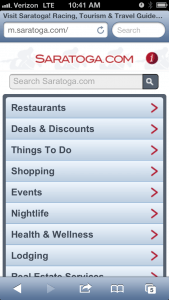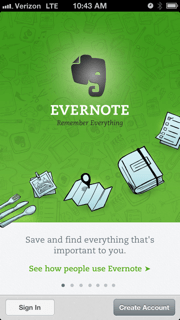Mobile usage has exploded in the United States, and the entire world for that matter, so we have to make sure our website presence is user friendly.
On mobile devices, a normal website can be very difficult to read so you really need a mobile solution that will keep your site visitors engaged and on your site. If you do not, you have very strong potential to lose these visitors as they are apt to leave and go to a competitor’s mobile friendly site that is easier to read and navigate.
With that said, let me take you on a tour of some of the different mobile and digital options available and their specific features.
Responsive Websites:

What is responsive website design? It’s a website built on a special framework so that regardless how you have the browser window sized, or which mobile phone or device you are on, the images and layout adjusts to fit the screen size, yet the content is still “tappy” (you can easily “tap” any hyperlinks.)
It is a “one size fits all” website approach that uses percentage based columns that ebb and flow as a user’s monitor size changes. What is really cool about a responsive design is you can have one website that is suitable for a plethora of monitor sizes, perfect for tablets, mobile devices, large monitors, small monitors, web tv’s, etc! Plus, we all know technology changes constantly and what might be the ‘normal size’ today is not normal tomorrow. Because of this, responsive design could be called “Future Proof”. With responsive design, your website will already be user-friendly for these new normals – making it a Mannix Marketing best practice.
The other positive to a responsive website design is since it is one website, on the same domain name, all links stay on the one site (great for SEO). In addition, ALL pages are user friendly for the different mobile devices. Plus, you don’t have to pay to design different sites for different browsers.
Here are some examples of great responsive design sites: Starbucks, Boston Globe, The Great Discontent and Microsoft
Mobile Sites:

A mobile website is a specific website designed for the screen on a smartphone. It uses a separate domain name (like m.domain.com or hosted on a different website domain altogether.) Best practices for mobile sites were choosing just the pages that are of the utmost importance for users that are on the go instead of adding all web pages you have on your desktop site.
Because a mobile site is built to specifically fit for a mobile browser, the user does not have to squint or stretch the screen to see exactly what they are looking for (which if you have ever had to do this, you know how super frustrating this can be!). A mobile website is also built to only have functionality that is visible on a mobile device (like not displaying Flash banner ads, etc)
With a mobile site, if you build it once, you do not need to build it separately for the different types device manufacturers. As you read more about Mobile apps, this is something you need to do to be compatible across different mobile phone carriers.
Mobile Apps:

A mobile app is only available for download and use on a mobile device like a smartphone or tablet. They are downloaded and installed on the mobile device instead of being services within a web browser. The benefit to this is a person does not have to have internet access to use the app. Sometimes referred to as a native mobile app, they are used for all sorts of things: as an easy to use function of a companion desktop website, gaming, personalized reporting, etc.
To download the app, users visit device specific portals such as Android Market, Blackberry App World or Apple’s App Store in order to locate and download apps for that specific operating system. The mobile app can be paid for or free for download.
The benefit to an app is you can use certain features only available on a phone, like the mobile device’s camera and GPS. In addition, you can create push notifications, SMS, reminders and other nifty things that are only available on your mobile device.
Here is a quick summary of mobile sites, mobile apps and responsive designs:
- Mobile Sites: Developed specifically for a mobile device. Uses big buttons, does not have any non-compatible features like flash, can’t be deleted, easy to create, can be housed as a sub-domain off of your own website; When best to be used: As a quick fix to get mobile-friendly if you do not have an initial budget to redesign your website as a responsive design. Negative: need to create a separate site for this; need to develop new links for the separate sub-domain; may need to change when the mobile device size changes; not all pages would be mobile friendly if you picked and chose which pages were to go on the mobile site.
- Mobile Apps: Applications that are downloaded and installed on a mobile device – perfect for gaming, personalization and when you want something unique that uses your phone’s functionality like the camera or GPS. Negative: not accessed via the internet and can be deleted on a device. A separate app needs to be developed for the different devices so it can get very costly.
- Responsive Websites: “One-website-fits-all” percentage based table site that can adapt to be user friendly on a multitude of different devices and screen sizes. Pro: can adapt with the changing times; do not need multiple websites for the different devices; all links go to one site.
Do you have a mobile website, app or responsive design? If you have a website, you need to get mobile! What types of mobile friendly sites do you like?
Call Mannix Marketing at 518-743-9424. One of our digital marketing gurus will help you with your mobile strategy and give you a free website consultation!
